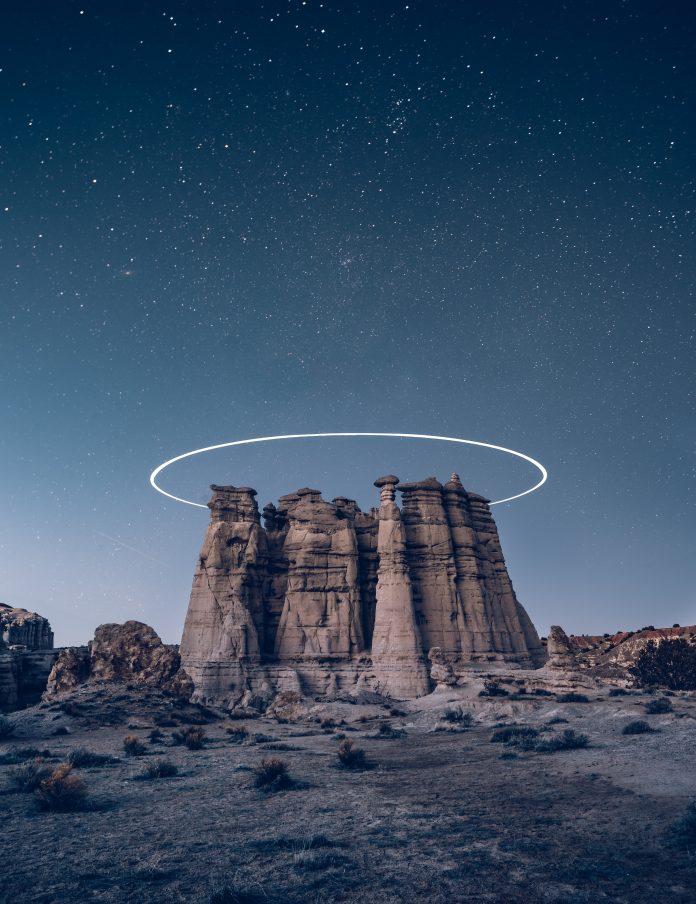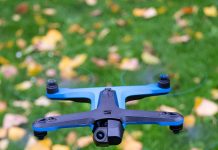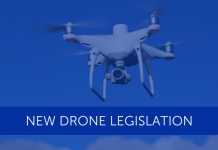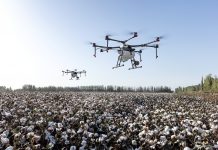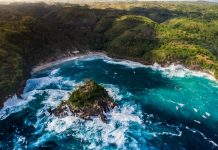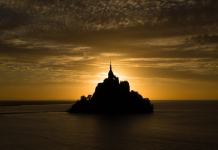Can I Fly My Drone at Night? We Have The Answer!
Table of Contents
Flying a drone in the day is great. But what about at night? Is it actually worth doing? Is there anything to consider while doing this? Let’s answer below!
If you are flying a drone for recreational purposes, e.g. it’s just your hobby, then you are free to fly your drone at night with no legal repercussions. But, if you are flying your drone for commercial reasons, under Part 107 rules, then you will need to get a waiver before you can fly the drone at night. If you want to fly your drone during twilight, this is okay, but only if your drone has appropriate anti-collision lighting.

Flying at night can produce some incredible pictures. Picture such as light trails and Moon photography all rely on the lack of ambient light, to create the desired effect. However, there are some important things that need to be considered.
1.Your Sensors may not work
Most drones currently on sale are fitted with safety sensors. These sensors are fitted to allow the drone to independently avoid obstacles. This is especially useful if the Return-To-Home is activated. These sensors detect obstacles and allow the drone to navigate round them. Drones such as the Mavic 2 Pro are fitted with obstacle sensing in every direction, meaning that no matter which direction you are heading in, your drone is always checking for obstacles.
It is important to remember, however, that these sensors rely on light to work. Therefore when flying at night, you may find that your drone may start to sense obstacles which don’t exist. In addition to this, you may start to see errors that your sensors are not turned on. This is nothing to worry about, but you should just be aware that your sensors may not work and so it is worth ensuring you can always see any obstacles when using your drone.
2. Your Front Lights may be visible in your shots.
My drone, the Mavic Pro offers the option to toggle the lights on the front arms on and off. This comes in especially handy when shooting at night, as shooting with these lights on could result in this light is visible in the shots. If shooting in light cloud/fog or near an object, this light could be visible due to reflections. This may be an effect that you intend to capture, but If not, its worth checking that you know how to toggle these lights if you have the option
3. Maintaining VLOS may not be as easy.
Despite your best efforts, flying in the dark will make it harder to keep sight of your drone. In most countries it is required that you maintain a Visual Line of Sight (VLOS) at all time. In some occasions such as flying with a First Person View (FPV) drone which can use goggles, a second ‘spotter’ is required to maintain VLOS. This is required to help to prevent any damage or crashes as relying solely on your drone’s camera does not always ensure that you can see every possible obstacle, and especially when flying in the dark, you cannot solely rely on your collision sensors as mentioned above.
4. Picture Quality may decrease.
When shooting at night, it will become very difficult to light your subject/scene enough to capture the detail you are looking for. This is because most drone cameras have a reasonably small lens. Generally, the bigger the lens, the more light that is allowed in. Drones such as the Mavic 2 Pro have a variable aperture, which can be widened to allow more light in. However, the easiest way to increase the brightness in an image is to increase the ISO. This is essentially an artificial light that is added in software. There is a downside to using ISO to increase brightness. As you increase the ISO, the quality decreases. The picture will become grainy and will the quality will be notably noisy. If you are shooting in the dark then it is important to ensure that your subject is well lit, which leads me onto the next point.
5. Consider using lights to illuminate your subject
In low light conditions, as mentioned above, shooting a dark subject can make or break a photo. If you a shooting a subject with no light, it may be worth investing in some lights for your drone, such as the Lumecube series of lights. Lumecube are a company that specialise in lights for everything from conference calling to drone photography.
They sell a range of kits that allow for a fitting the lights onto your DJI drone. The lights are adjustable to any direction and can be controlled by a smartphone app using bluetooth. The app allows for adjustment to colour temperature, as well as brightness. This allows for you to match the lights perfectly to your shoot enabling you the best possible pictures.
The lights are also not limited to just drone uses as they are also waterproof to 100ft underwater, which makes them great for using in scuba situations or any other filming.

